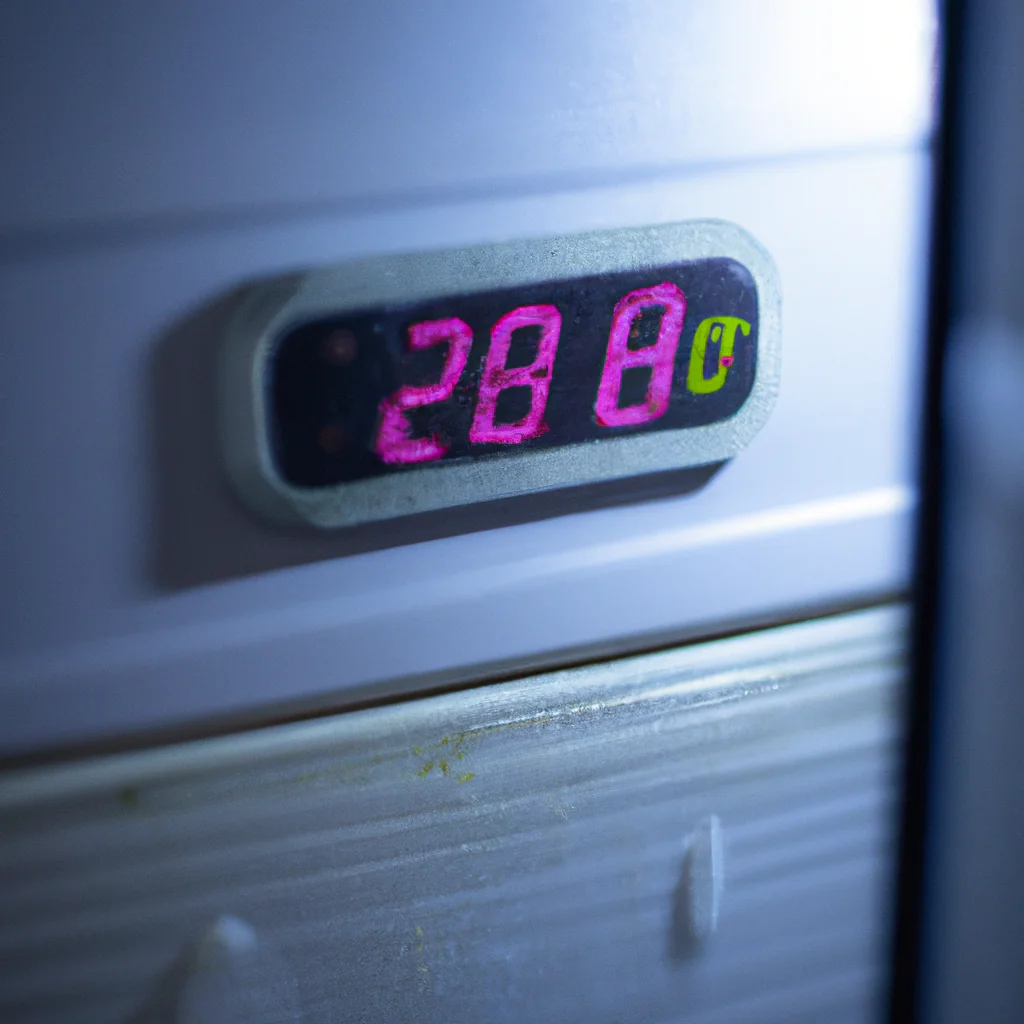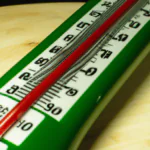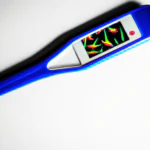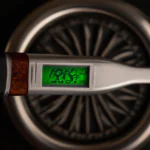Are you making sure that your fridge and freezer are at the right temperature? Having the correct temperature is essential for storing food safely and ensuring that it is kept fresh and safe for consumption. But what temperatures should your refrigerator and freezer be set to?
In this article, we’ll answer all your questions about refrigerator and freezer temperatures. We’ll explain what is the ideal temperature to keep foods in and why, as well as warning signs that your refrigerator or freezer might be too hot or too cold. Read on to find out how to safely store your food by keeping your refrigerator and freezer at the perfect temperature!
Table of Contents
Is 45 Degrees a Safe Temperature for a Refrigerator?
Foodborne illnesses are a major cause of sickness, and improper storage of perishable food items can be one of the main culprits. To protect you and your family from contracting foodborne illnesses, it is essential to store certain food items properly at home.
When storing food in your refrigerator or freezer, make sure to use an appliance thermometer to check the temperature. Consistent temperatures of 40° F or lower in the refrigerator, and 0° F or lower in the freezer, are necessary to keep food safe.
Within two hours of cooking or purchasing food items like meat, poultry, eggs, or seafood, they need to be refrigerated or frozen. If the temperature outside is over 90° F, this needs to be done within one hour.
- Meat and seafood should be placed on the lowest shelf in the fridge.
- Eggs should always go in the main section and not in the door.
- Never leave any perishable food items out at temperatures above 40° F.
It’s important to remember that unless you have an appliance thermometer, you can’t be sure what temperature range your refrigerator is running at. Storing foods at 45° F could still potentially lead to spoilage and contamination due to inconsistencies. In order to guarantee safe temperatures and prevent any kind of bacterial growth or foodborne diseases, your refrigerator temperature should always remain 40° F or below.
By following these instructions and taking precautions such as measuring temperature regularly with a thermometer, you can keep your family safe from harmful bacteria and illnesses that could be caused by improper food storage.
Chill Out: Is 45 degrees a safe temperature for the freezer?
When it comes to preserving food, an accurate temperature for the freezer is critical. The aim is to keep food at below 40 degrees Fahrenheit (4 degrees Celsius). If the temperature gets too hot, you risk spoiling the food and putting yourself at risk of foodborne illnesses.
It’s easy to take precautions by installing an appliance thermometer in your freezer. This device is able to accurately measure the temperature inside the freezer.
Following these refrigerator guidelines, you can confidently store groceries and keep them safe up to a temperature of 40 degrees Fahrenheit (4 degrees Celsius). Once the internal temperature moves above that mark, you need to discard the items in order to prevent any potential health risks.
In other words, if your freezer reaches 45 degrees Fahrenheit, the food should be thrown away. Given high temperatures are hard to detect without an appliance thermometer, it’s important to create a system where you check and record regular temperature readings.
- Check your thermometer readings twice per day (ideally morning and evening)
- Record all measurements as soon as you take them
By doing so, you’ll know when something is off and can make changes before it reaches 45 degrees Fahrenheit or above.
Too Hot? Is 40 degrees too warm for the fridge?
The safe temperature range for a refrigerator is between 35° and 38°F. The US Food and Drug Administration (FDA) recommends that you keep your refrigerator temperature at or below 40°F and your freezer temperature at or below 0°F. But the optimal temperature range for a refrigerator is actually lower than what the FDA recommends.
To ensure food safety, your refrigerator should stay between 35° and 38°F (or 1.7 to 3.3°C). This range provides an ideal level of humidity for storing food. It also helps keep food safe by slowing down bacterial growth, which could lead to food spoiling or becoming contaminated.
Contrary to popular belief, refrigerators do not need to be set at extremely low temperatures to keep things cold. Setting your fridge too low can cause it to become overloaded with ice and frost, making it too hard to keep track of the food inside.
Here are some tips on how to keep your refrigerator in the ideal temperature range:
- Check the manufacturer’s instructions when setting up a new fridge, as most have recommended settings.
- Keep the coils clean, as this will help regulate the temperature in your fridge.
- Don’t leave the door open for long periods of time, as this will cause warm air to enter.
- Make sure you are not overloading the fridge with too much food as this can affect its ability to cool correctly.
Regularly check the temperature with a thermometer to ensure that it stays within the recommended range.

Don’t Risk It: What temp is unsafe for a refrigerator?
Keeping your refrigerator at the right temperature is key to ensure that all food and drinks stored inside stay safe and fresh for consumption. The ideal temperature setting for a refrigerator is 40°F or below. This temperature accurately preserves food, keeping it from spoiling or growing bacteria.
It’s important to keep track of and monitor the internal temperature of your refrigerator to ensure it’s staying at a consistent 40°F or lower. Many new refrigerators come with an in-built thermometer so you can easily check the temperature. If your refrigerator does not have this feature, you can purchase an appliance thermometer to do the same job.
The following are a few signs that may indicate that your fridge is too warm:
- Your food and drinks don’t stay cold.
- Foods spoil sooner than usual.
- You see build up of condensation or frost on walls or food items.
- Your electricity bills seem higher than normal.
If you suspect any of these issues in your refrigerator, it’s a good idea to get it checked as soon as possible, as leaving warm temperatures unchecked could put food safety at risk. It’s also important to follow other safety protocols such as regularly cleaning the interior surfaces of your refrigerator and discarding expired items.
Monitoring and maintaining the correct temperature setting in your refrigerator is key to promote food safety, save money, and keep foods fresher for longer periods of time.
A Fridge Too Far: What happens if the fridge is too warm?
If your refrigerator has been running a little warmer than normal lately, you may be experiencing some food and drink-related inconveniences. A warm refrigerator can be a major issue as it can cause food to spoil and ruin refreshingly cold beverages. It’s important to know what could be causing your refrigerator to run warm and how to properly address the problem.
When temperatures inside the refrigerator are higher than their optimal level, this could mean that something is wrong with the appliance. The most common reasons why a fridge may be running too warm include issues with the gasket seal, settings, or motor. In certain cases, an external appliance may be affecting the temperature of the fridge. So if you’re experiencing unusually warm temperatures, it’s important to consider all possible causes.
If you have confirmed that your fridge is indeed running warmer than usual, there are steps you can take to fix it. Making even simple adjustments can have a profound impact on your food’s lifespan and the taste of cold drinks! Here are a few things to try:
- Clean and re-adjust the gasket seal. The gasket seal surrounds the refrigerator door and helps to ensure that no outside air or heat enters in. If dust accumulates on its surface or it becomes misaligned due to heavy use, it won’t create a proper seal around the doors of the fridge. Clean off any dust or debris and check that the seal is lined up correctly.
- Check or adjust internal settings. Certain refrigerators models allow you to adjust the internal settings using buttons or a dial control. Change these settings until you get a consistent temperature reading inside of your fridge.
- Move external appliances away from your refrigerator. If any external appliances such as an oven or microwave are located near your fridge, make sure that there’s at least one foot of space between them. This will help ensure that your fridge isn’t being affected by external sources of heat.
Although warm fridges can be troublesome, understanding the cause and taking prompt action can help prevent major inconveniences caused by spoiled food and over warm beverages. Armed with this knowledge and practical solutions, you will no longer have to suffer through a warm refrigerator!
Food-spoiling Fiasco: Will food spoil at 50 degrees in the refrigerator?
It is important to pay close attention to the temperature of your fridge, as temperatures above 40 degrees can put food items in danger of bacteria contamination. When the refrigerated temperature exceeds this point, it is wise to monitor your food closely. Any food left at a temperature above 40 degrees Fahrenheit runs an increased risk of spoiling and releasing dangerous bacteria into your environment.
Bacteria multiply rapidly when given the right environment; they react well to warm and moist environments, which is why monitoring your fridge’s heat levels is so essential. Without doing so, you run the risk of experiencing a bacterial build-up that not only causes food poisoning but also other health complications.
Here are a few tips to ensure your food remains safe and free from contamination:
- Regularly monitor refrigerator temperatures: Checking routinely will let you know if your food is at risk.
- Throw away any spoilt food: Even if it appears ok on the outside, if the temperature has exceeded 40 degrees, the food item may carry dangerous bacteria.
- Clean regularly.




